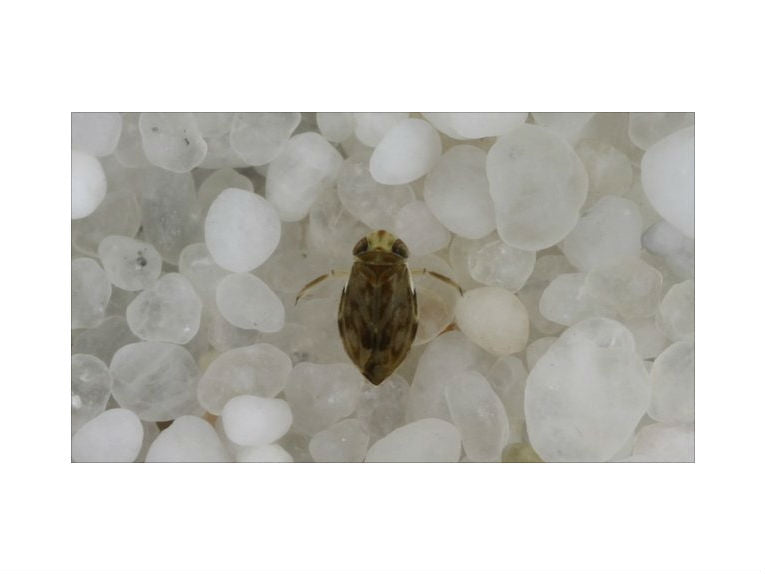What's the loudest noisemaker in the animal kingdom? The deep-throated roar of a male lion? The earth-shattering bellow of a bull elephant? Or the ocean-crossing siren-song of the blue whale? According to a duo of entomologists - from Paris and Glasgow - it is none of these mighty animals, at the very apex of their respective ecosystems. Instead, a tiny pond-dwelling insect can claim the volume crown, when decibels are measured pound-for-pound.
The new title-holder is species of water boatman just a tenth of an inch long, Micronecta scholtzi, which is common in European ponds and rivers. To be fair to the elephant and the whale, they do edge out the minuscule insect in total volume emitted - being able to push out nearly 120dB and 190 dB of sound, respectively. But when the fairer measure of volume per body mass is made, M.scholtzi is the winner hands-down, at a mighty 99 dB, for its milligram weight.
The scientists - Dr. James Windmill of the University of Strathclyde, Glasgow and Dr Jerome Sueur, from the Museum of Natural History, Paris - recorded the water boatman making its courting song using specialist underwater recording equipment. The results of their study are being presented today at the Society for Experimental Biology Annual Conference, held in Glasgow, Scotland, this week.
Surprisingly, this puny insect, barely visible to the naked eye, is often heard by those strolling past its watery habitat. Dr. James Windmill, from the University of Strathclyde, said 'Remarkably, even though 99% of sound is lost when transferring from water to air, the song is so loud that a person walking along the bank can actually hear these tiny creatures singing from the bottom of the river.'
Even more remarkable, though, is the organ responsible for the deafening noise - its penis. Although only a hair's breadth, at 50 micrometers across, the rubbing of its ribbed penis against its abdomen is enough to produce a call, suitable for attracting mates from far afield. But the exact mechanism remains something of a mystery at this stage. "We really don't know how they make such a loud sound using such a small area," says Dr. Windmill.
But the recording of insect noise has more potential practical applications than just an entry in the Guinness Book of World Records. Dr Windmill sees sound monitoring as a new frontier in conservation. 'Biologically this work could be helpful in conservation as recordings of insect sounds could be used to monitor biodiversity. From the engineering side it could be used to inform our work in acoustics, such as in sonar systems.'
Image Credit: © University of Strathclyde










